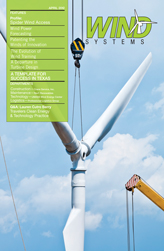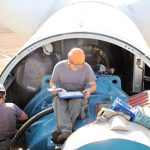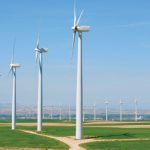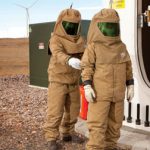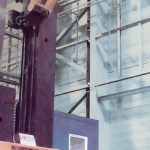Lubbock’s highly skilled and educated workforce, proximity and connection to major national and international markets, and affordable utility and living costs make it the ideal place to grow your wind-energy business. As the hub city of West Texas, our economy is diverse, with a healthy mix of business and professional services, wholesale and retail trade, research and manufacturing, and government employment. Lubbock also has the largest medical industry between Dallas and Phoenix.
With a regional population base of more than 287,000 people, Lubbock’s size affords businesses access to dedicated community leaders and personalized service while providing a pipeline of personnel to fill your workforce needs. With a Division I university, two private universities, and a fast-growing community college, Lubbock County boasts over 50,000 college students. If your business has an interest in access to technology and innovation, Lubbock is the place for you to grow and prosper. Figure 1
Strategic Location
Lubbock is located on the south plains of West Texas on the crossroads of Interstate 27 and four major U.S. highways, in the central time zone, and equidistant to both coasts for ease of U.S. distribution. Within the city you will find a well-planned transportation network with an average commute time of 16 minutes, as well as the Lubbock International Airport.
As a new company looking to relocate or expand into Texas, Lubbock is the right place for you. The Lubbock Economic Development Alliance (LEDA) prides itself in being your resource for success and looks forward to serving your business needs. We understand the difficulty in choosing a new location, and we have all the right tools to assist you in your decision making process whether you are a business owner or site selector. Lubbock’s great attributes include its low cost of living, productive workforce, ideal transportation location, local and state incentive packages, sustainable industries, and many educational opportunities. LEDA also utilizes the extensive knowledge of regional resources, industry clusters, and the local business community environment to remain competitive and meet your businesses needs. Figure 2
Wind Energy
“Lubbock is a natural fit for a wind energy company to locate because of its strategic location within the developing wind resource, complemented with access to industry-leading wind research at Texas Tech University that is fueled, in part, by an $8.4-million grant from the State of Texas,” according to John Schroeder, Ph.D., director and associate professor of atmospheric science at the Texas Tech University Wind Science & Engineering Research Center.
Texas is the national leader in overall wind installations and is the first state to reach 10,000 megawatts (MW) of wind energy installations. Texas is also home to three of the 2008 Top Wind Congressional Districts. Lubbock is number one. Within Texas, the Panhandle region possesses the top four proposed Competitive Renewable Energy Zones (CREZs), otherwise known as “hot spots” for renewable resources. By connecting these CREZs to the Electric Reliability of Texas (ERCOT) grid, Lubbock—in conjunction with the entire West Texas region—has the opportunity to transmit more than 18,000MW of wind power to the metropolitan areas connected to the ERCOT grid due to recent legislation. Figure 3
Academic Resources
Texas Tech University is internationally known for its study of the wind. For more than 40 years scientists have looked at how the wind affects buildings and human lives. Now Texas Tech is positioning itself to become a world leader in wind energy. The National Institute for Renewable Energy (NIRE) and Texas Tech University will soon power up the first of several planned renewable energy test production facilities to help resolve key issues. The first wind turbines will be placed at Reese Technology Center in Lubbock.
The Wind Science and Engineering Research Center (WiSE) is a collaborative center that bridges multiple disciplines including atmospheric science, economics, mathematics, and civil, mechanical, and electrical engineering. WiSE has pioneered above-ground storm shelters and developed FEMA adopted regulations on household and community storm shelters, helped to establish stronger building codes for cities in hurricane and tornado prone areas, and led the effort to develop the Enhanced Fujita Scale. Figure 4
“From a research standpoint, Lubbock is the ideal destination to refine your existing technology or build it from scratch,” Schroeder says. “Texas Tech University is using its unique observational facilities to study everything from large-scale atmospheric phenomena to small-scale turbulence in an effort to optimize turbine performance and minimize loads.”
If Texas were a country, it would rank sixth in the world in installed wind power. Texas continues to lead the nation in the number of installed wind turbines, totaling 6,485 wind turbines with a gross capacity of 9,728MW for 2010. This effort has been made possible through the cooperative attitude of land and business owners, in both the public and private sectors, who understand the importance of renewable energy. Figure 5
Manufacturing
The manufacturing industry is highly diverse in Lubbock, from food, machinery, and fabricated metal to computer and electronic product manufacturing. According to the Bureau of Labor Statistics (BLS), manufacturing in the United States will have an average annual rate of change of -1.3 percent from 2008 to 2018. During this same period, the South Plains region will have an annual rate of change of 6.0 percent.
Lubbock’s success rests in leveraging its most valuable community resources and organizing partnerships at the local, state, and federal levels. Over the past decade the LEDA workforce team has been recognized statewide and nationally for its innovative and creative workforce programs. One such partnership—known as the Byron Martin Advanced Technology Center (ATC)—was the first of its kind in the nation, and it has since been a model to other programs looking to implement similar ventures. This unique educational venture located in Lubbock is composed of a partnership between the South Plains College, the Lubbock Independent School District, Lubbock Economic Development Alliance, and a number of industry partners. The ATC delivers cooperative technical education programs to support the development of a skilled technical workforce for Lubbock and the South Plains region. The facility enables South Plains College to collaborate with its educational partners to provide rapid response training to attract new business and industry and customized job training to support and retain existing businesses. The ATC is the first high school in the nation to have this type of pathway to higher education with cultivated partnerships amongst high school, community college, and higher education.
Another great program continuing to strengthen Lubbock’s manufacturing industry is the Manufacturing Certification Program under the national organization, the Manufacturing Skills Standards Council (MSSC). MSSC training and assessment address the need for employability as well as academic and technical skills. Rigorous assessments require mastery of core knowledge and skills that are essential to high performance manufacturing. MSSC certification is designed to validate that certified individuals have both the technical and academic skills needed to work in modern manufacturing.
The manufacturing industry is strong and vibrant in Lubbock. In 2010 it had an overall economic impact on the city of over $1.5 billion. Lubbock’s success is centered on its ability to offer a diverse conglomerate of educational opportunities, abundant skills development resources, and an engaged business community. Plus, West Texans have been instilled with an entrepreneurial spirit, an industrious character, and a proud work ethic found nowhere else.
City Profile
At 250,000 people, Lubbock is the eleventh largest city in Texas, the second largest west of I-35, and is projected to grow 6.13 percent through 2017. With a median age of 29.41, the city’s residents are youthful and hardworking. Lubbock’s cost of living, almost 11 percentage points below the national average, is the lowest among the major cities in Texas and the United States, and are strengthened still further due to the absence of any personal income taxes.
Lubbock enjoys 263 days of sunshine per year, with average monthly high temperatures in the mid fifties and low nineties in the winter and summer, respectively. As a result of Lubbock’s ideal climate, area operations are rarely impacted by weather conditions and experience virtually no weather related downtime.
The Lubbock Economic Development Alliance offers a complete set of services, including arranging a full itinerary of meetings and briefings for you during a visit to Lubbock. We will go to great lengths to provide you with all the right contacts and information to support your decision to relocate or expand to Lubbock. New business is good business, and we strive to help you succeed.



















